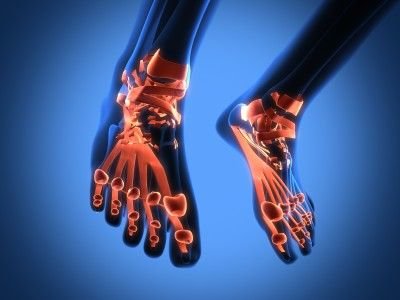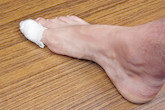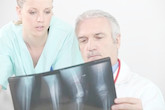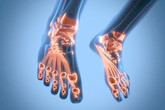A look At Brittle Bone Disease Treatment Options
Brittle bone disease also known as osteogenesis imperfecta or Lobstein's syndrome, is a disease that is usually caused by a defect in production of a proteins that is known as collagen. Collagen is a vital protein which assists in supporting the body. Since the production of collagen will have been interfered with, the bones will end up being weak, brittle and have stunted growth.
There are a number of types of brittle bone disease. There are four types of this sickness and all of them are transmissible. People who suffer from brittle bone disease normally suffer III fractures while in the womb and they hardly ever survive beyond their early adult years. Even easy acts such as rolling on the bed can cause bone fracture.
Brittle bone disease usually occurs as a result of a genetic mutation in the gene that guides the body to yield collagen. The disease can either be passed down from a father who has the illness, or it can happen as an impulsive mutation in a kid.
Most instances of osteogenesis imperfecta which are passed on from parents are because of a dominant mutation, even though minor cases are because of recessive mutations. People who have osteogenesis imperfecta might have very fragile bones, hearing loss, extremely flexible joints, sclera or whites of the eyes and dental abnormalities.
Nowadays, there is no well-known cure for this disease. The primary focus of the medication should be on stoppage of the injuries and keeping healthy bones. If your child has this disease, you should make sure that he or she eats a balanced and nutritious diet, exercise regularly and have a healthy weight. Children who have osteogenesis imperfecta will need braces or wheelchairs. Below are some of brittle bone disease treatment options.
Physical Therapy
Many people who suffer from osteogenesis imperfecta have few fractures and very slight swelling of the lax tissues. Thus, doctors can treat them with grip for some few weeks and then a cast. After that, physical therapy can begin, especially if fractures are not painful.
Growth Hormone
Kids who have brittle bone disease kinds I and IV can use growth hormones as a medication. Type one is usually one of the mildest kind of brittle bone disease. People who have type I of brittle bone disease have blue sclera of the eye instead of having normal white color. In addition, these people have extremely flexible joints, reoccurring fractures and muscle pain. Type IV is a reasonable form of the illness in which victims are short, have ruptures and blue sclera in youthful but when they become adults, they develop white sclera. The growth hormone is usually made by anterior pituitary glands of the brain. It is normally used as a medication since it upsurges the growth of kids with the disease.
Bisphosphonates
Generally, old bone in one's body is usually broken down and then a new bone is made. Bisphosphonate is a medication that manages the two procedures. Doctors prescribe them in order to minimize the amount of bone loss and number of fractures. Bisphosphonates are normally used to cure severe and moderate forms of Osteogenesis imperfecta. The long-term impacts of using the medication are not yet known. Pamidronate and Alendronate are examples of bisphosphonates. These drugs are also used for treatment of other bone affecting conditions, such as osteoporosis.
Calcium
You can also use calcium to treat brittle bone disease. The rationale behind using calcium supplements is that they strengthen bones and minimize the frequency of fractures. Calcium is good for the development of strong bones. Therefore, if you are suffering from this condition, you can opt for calcium supplements as your treatment option.
Stem Cells
This is another way of treating osteogenesis imperfecta. A research was carried out on four children who were suffering from severe from of the illness. The children received bone marrows stem cells intravenously. Stem cells also known as multi-potential stromal cells or rather MSC travel to regions where there are injured tissues and repair the tissues by becoming osteoblasts, cells which build new bone. In the initial part of clinical trial children improved after having a bone transplant. In the second part, the received stem cells. Children further improved even though the improvements were temporary.
These are some of the ways in which an individual can use to cure osteogenesis imperfecta. Use a method that will work best for you but always consult your physician first.
| Written by: | Michal Vilímovský (EN) |
|---|---|
| Education: | Physician |
| Published: | June 5, 2013 at 8:14 AM |
| Next scheduled update: | June 5, 2015 at 8:14 AM |
Related articles
Get more articles like this in your inbox
Sign up for our daily mail and get the best evidence based health, nutrition and beauty articles on the web.









Ache in left arm that you should not ignore
Alkaline water dangers: why you should not drink it
How to Avoid Sleepiness While Studying?
23 Foods That Increase Leptin Sensitivity
Low dopamine (e.g. dopamine deficiency): causes, symptoms, diagnosis and treatment options
Swollen taste buds: the ultimate guide to causes, symptoms and treatment
Thin endometrial lining: causes, symptoms, diagnosis and treatment
Pimples inside nose: the complete guide
Holes in tonsils: definition, symptoms, treatment and prevention
How to deal with an ingrown hair cyst
Allegra vs. Zyrtec vs. Claritin
Allergy to penicillin and alternative antibiotics
How to get rid of phlegm (excessive mucus) in throat? Detailed guide to medical and home remedies, symptoms and causes
What causes stomach ache after meals?
Liver blood test results explained